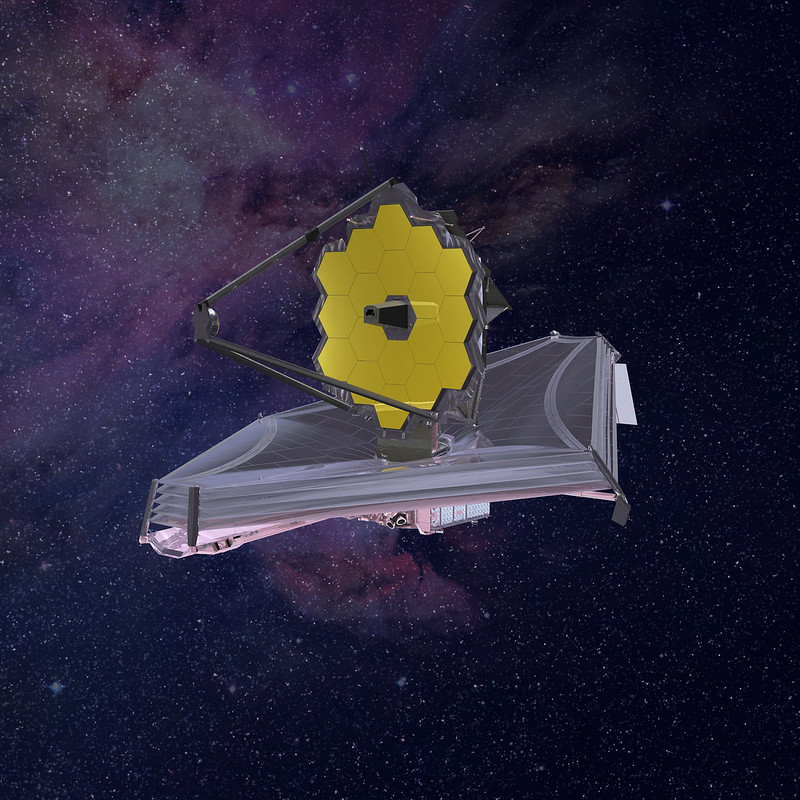The James Webb Space Telescope is the Future of Astronomy
“James Webb Space Telescope Artist Conception” by James Webb Space Telescope is licensed with CC BY 2.0.
The James Webb space telescope uses unseen infrared sensitivity and can look back in time 13.5 billion years to see the earliest galaxies born after the big bang! The telescope was originally set to launch in October 2018, but due to delays, it is currently set to launch on October 31, 2021.
The telescope is made up of two main sections; the sun shield and the instruments. The sun shield resembles the shape of a coffin when it is unfolded, and the telescope sits on top of it, as seen in the picture. The shield is there to protect the telescope from the heat of the sun, moon, and Earth. Webb needs the heat to be blocked because the telescope’s machinery operates at really low temperatures, even lower than the temperature of Pluto’s surface.
Once it is launched from French Guiana, it will take approximately three weeks for Webb to unfold its sun shield and mirrors fully, then after Webb has cooled, it can begin its space discovery. The space telescope will be Hubble’s successor, and its mission will last 5-10+ years. A big difference between Hubble and Webb is that Webb will be going out farther from Earth. The Hubble telescope orbits the Earth, while the Webb telescope will orbit the sun at approximately 100 million miles from us.
The James Webb telescope will be a fruitful asset in space discovery, and it will help us learn more about the universe around us.
RELATED STORIES:











